Lauren, Mikaela, and Olin
Hello, for those of you hanging onto the edge of your seats, expecting to hear about our hippo escapades aboard the SS Minnow, hang on a little longer. Tomorrow, I promise! We did however try to see some hippos from land after our debrief last night. It became apparent that running with flashlights, screaming “HIPPO!” at the smallest sign of movement was not an effective strategy for catching a glimpse of the elusive beast. Defeated, we repaired to our tents.
At night, we were serenaded by an orchestra of amphibians and birds alike. This was no Met. The cacophony had some standout vocal stars, yes, like the white-browed robin chat. But their sweet song was invariably interrupted by the horrible, squawking, ear-shattering hadada ibis. Think holiday school concert. There’s some talent, but it’s overwhelmingly drowned out by children not destined for a career in music. It still has its charm.
So, after this night of mixed rest we awoke anew, bright eyed and bushy tailed. Oh my gosh, MONKEYS?! Wait, what are they doing? No, get out of that bag, drop Vikas’s aloo bhujia (Indian snacks)!
Within about ten minutes, it went from “He’s five feet from me!! I literally could never get sick of this,” to “Urgh, monkeys.”
And then we had breakfast. Next up, time for class.
Enter Dr. Lougheed’s crash course in birding. “These magnificent creatures offer a window into ecology.” Something often overlooked, like the shape of the beak, the size of the bird, or the flying pattern it follows, is in fact a visual shortcut into the intricacies of each species’ habits and happenings. For example, we learned that the sunbirds have decurved beaks to get to the nectar of the corolla of the flower.
Next, it was off to the races for our practice birdathon (practice for the real deal coming up). Skill varied – some darted about, identifying birds left and right (ahem, Mikaela), while others (ahem, everyone else) waddled about like headless chickens. For a bunch of beginner birds, though, we weren’t half bad by the end of it. Species of note included the lilac-breasted roller, white-eyed slaty flycatcher, and the Fischer’s lovebirds, with the hamerkop was a crowd favourite.
The afternoon saw the group learning about the use of GPS units to guide us through our geocaching activity. First, we had to figure out latitude and longitude. This was a group effort, and when we had our waypoints set, Dr. Wang and Dr. Abeyrama signalled the start. This activity gave us to opportunity to test our knowledge on Kenyan natural and cultural history. From the evolution of hippos to Kenyan independence, teams raced around the campground. But they could only be one winner… our group took the prize.
The class settled down for our series of evening presentations by students, which have provided all of us with some theory behind the awe-inspiring sights we’ve seen so far. Then, close to shore, we heard the unmistakable puff of surfacing hippos. We calmly walked over, took a deep breath, and enjoyed the hippo style sychronised swimming. There’s a lesson here somewhere… good things come to those who wait.
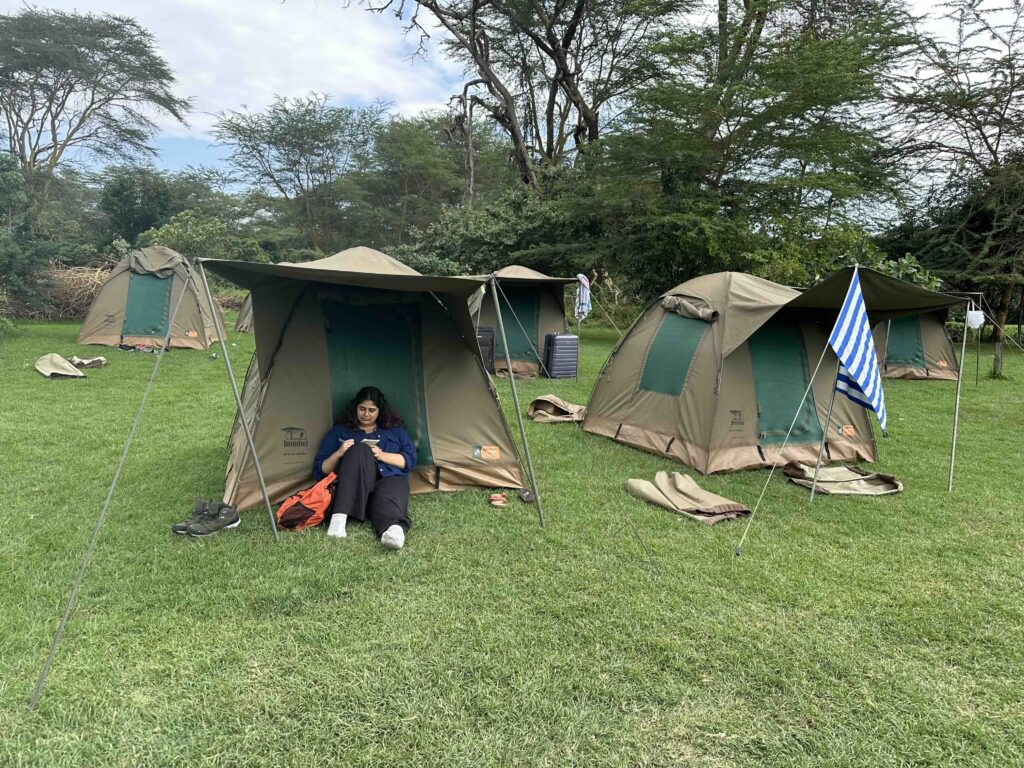
Renée writing the beginning of her novel
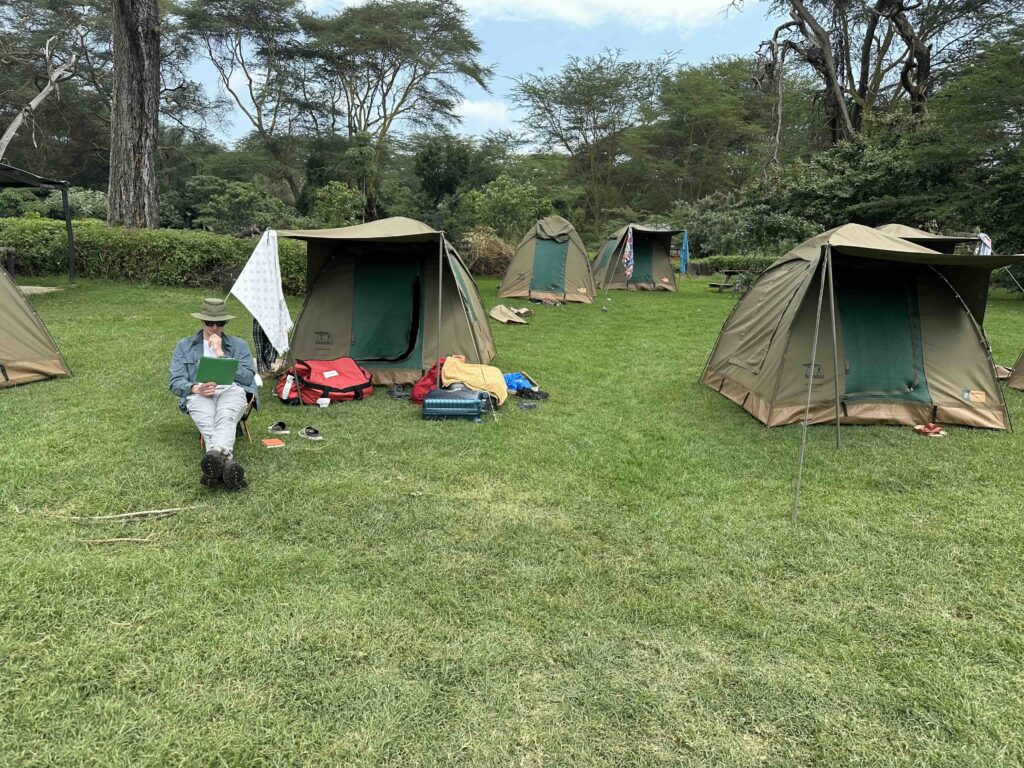
Olin contemplating the universe

GPS units for geocaching exercise
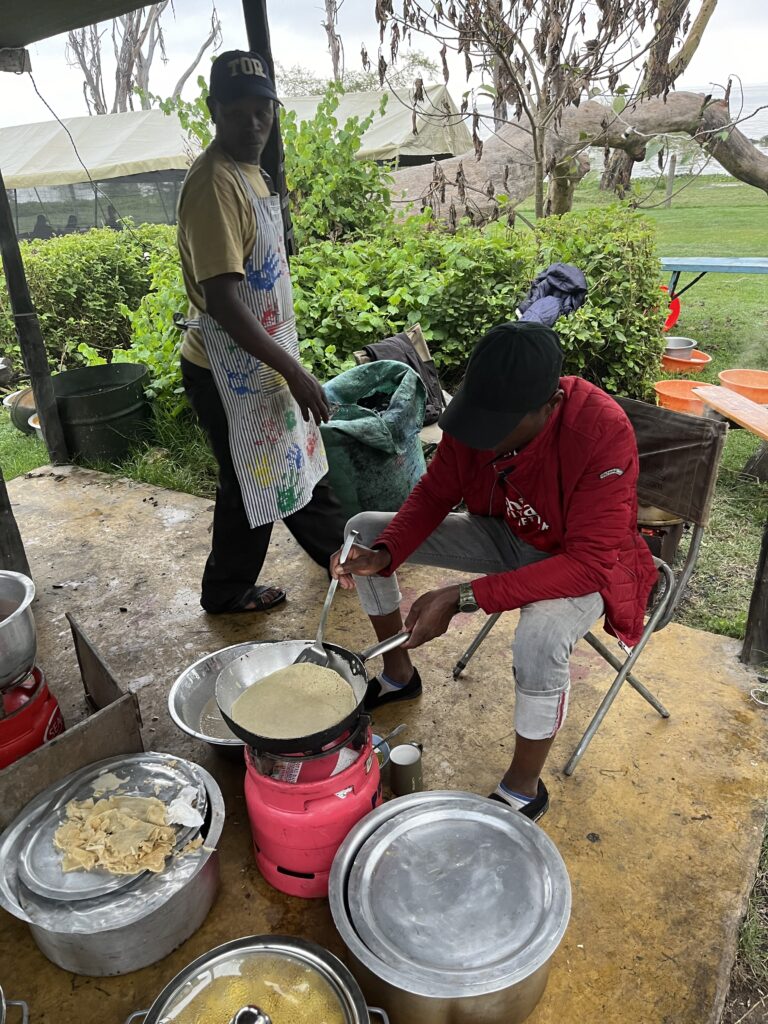
John (foreground) and Kevin cooking

black crake strutting in the macrophytes along the water’s edge
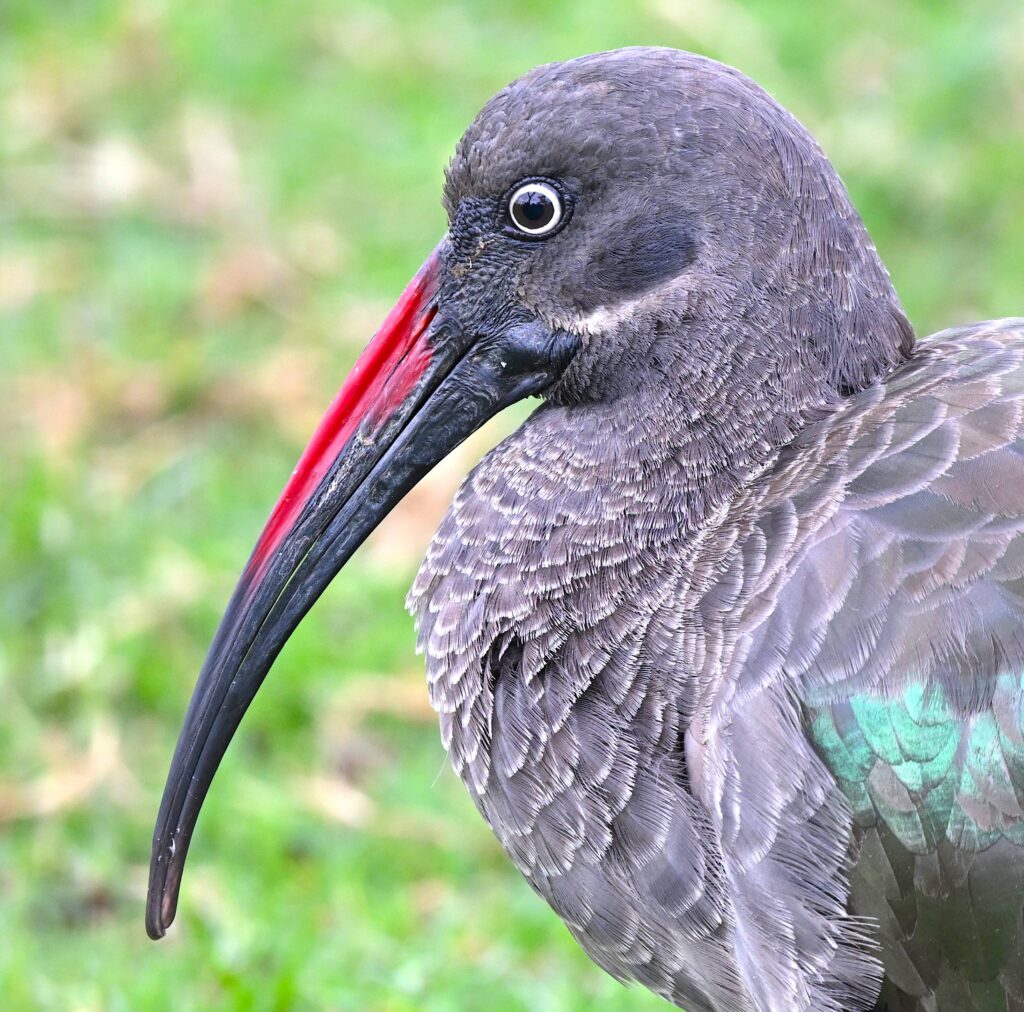
Hadada ibis
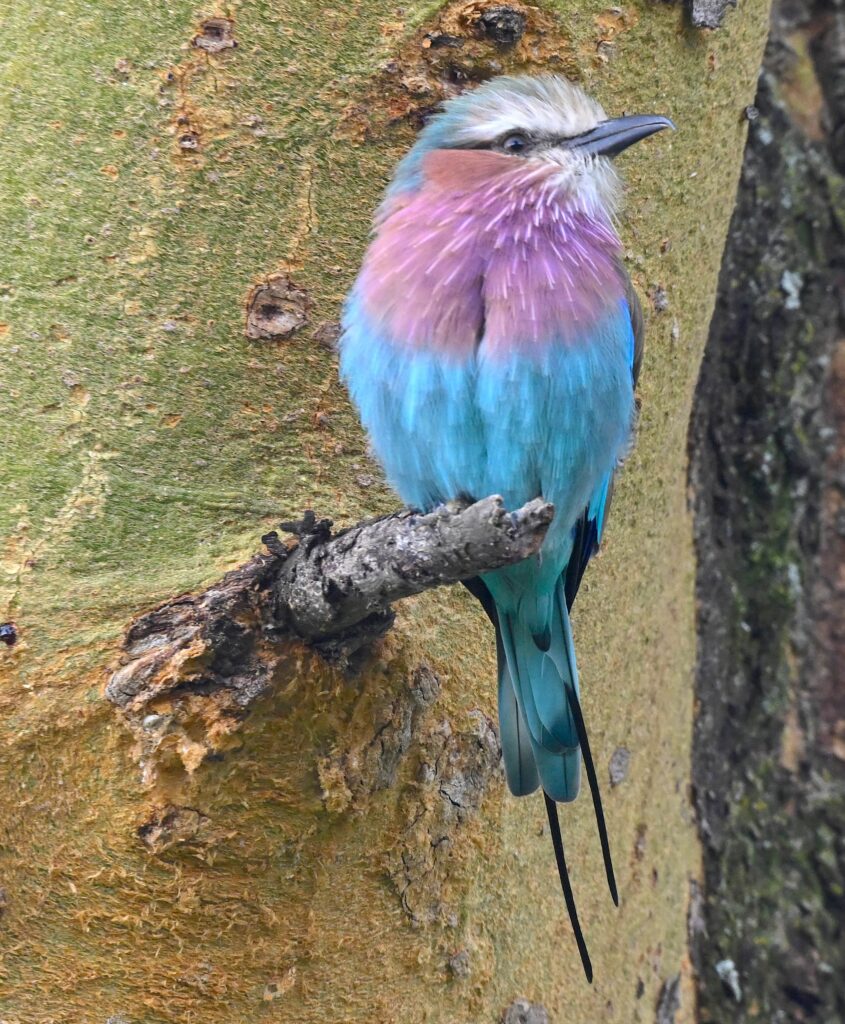
lilac-breasted roller

white-eyed slaty flycatcher guiding the way to our outdoor showers
Leave a Reply